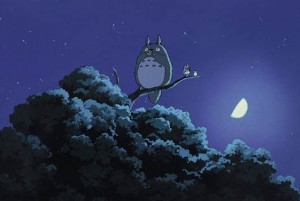The Pope and the Animator

The Pope and the Animator | John Herreid | IPNovels.com
What the films of Hayao Miyazaki can reveal about Laudato Si’
“The aesthetic of the Pope’s reflections (on the tension between man and nature, the tendency of man to use technology to dominate others and the environment, and the ideal of an integral ecology) remind me of the films of Hayao Miyazaki. I think Miyazaki explores similar themes, although from a very different perspective.”
That’s what my wife Aletheia posted online after starting to read Pope Francis’ encyclical Laudato Si’. But how much in common do the views of a Japanese animator and an Argentinian pontiff really have? Let’s take a look.
Who is Hayao Miyazaki?
Japanese animation was regarded in the West for many years as exemplifying cheapness. To cut costs, American animation studios would outsource to Japan. A number of Saturday morning cartoons in the 1970s and 1980s were animated in this way, with fairly uninspiring storylines and pedestrian animation. One of the people who would help change all this was a young animator named Hayao Miyazaki. Cutting his teeth working on different series, he quickly rose to director status. Early work included the first half-dozen episodes of Sherlock Hound, an adaptation of Arthur Conan Doyle’s detective stories recast with animals, featuring glimpses of what would become Miyazaki’s visual hallmark: inventive depictions of fantastic machinery set against a bucolic environment.
 When Hayao Miyazaki was a small child his father ran a factory making parts for war planes, including rudders for the famed Mitsubishi Zero. The contrast between the beauty of flight and the destructive power of such weaponry seems to have made a large impact on Miyazaki’s perception of the world. A recurring theme in his animated films is how men and women are easily seduced into thinking they can control nature via technology. In Nausicaä of the Valley of the Wind, people try to use a genetically modified giant to eradicate a threat. InPrincess Mononoke, the industrialist Lady Eboshi attempts to kill a forest spirit who threatens her ironworks. In both cases powers beyond man’s control are unleashed.
When Hayao Miyazaki was a small child his father ran a factory making parts for war planes, including rudders for the famed Mitsubishi Zero. The contrast between the beauty of flight and the destructive power of such weaponry seems to have made a large impact on Miyazaki’s perception of the world. A recurring theme in his animated films is how men and women are easily seduced into thinking they can control nature via technology. In Nausicaä of the Valley of the Wind, people try to use a genetically modified giant to eradicate a threat. InPrincess Mononoke, the industrialist Lady Eboshi attempts to kill a forest spirit who threatens her ironworks. In both cases powers beyond man’s control are unleashed.
Another theme is how selfish choices have an impact beyond the individual, and how finding an adult path in life cannot come through acts of rebellion.
Carl E. Olson's Blog
- Carl E. Olson's profile
- 20 followers



